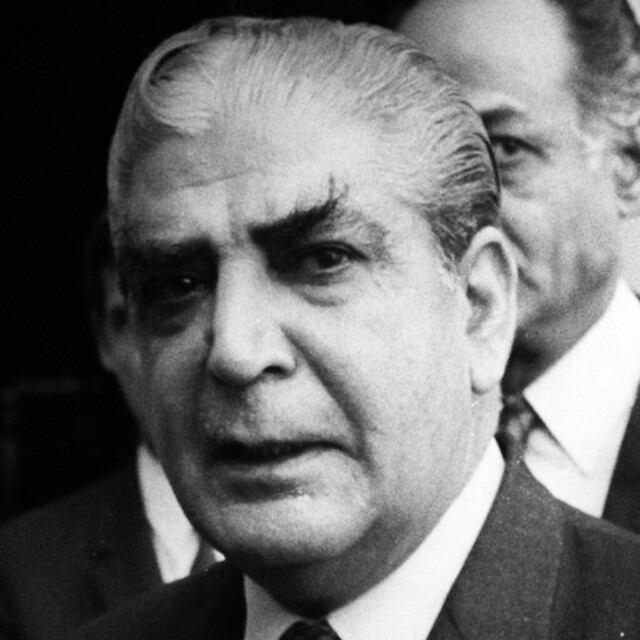In early May during the Liberation War, Pakistan President General Agha Muhammad Yahya Khan was pondering the transfer of political power without holding fresh elections.
He was in favour of the Awami League forming the nucleus of the government in East Pakistan as it swept a landslide victory in the December 1970 elections, except for the people against whom there is some unfavourable evidence.
“However, the rest of the Awami League can drop its title and form a government. They will be able to operate on the basis of an agreement as close to the six points as possible, meeting the legitimate needs of East Pakistan,” MM Ahmad, Economic Adviser to President Yahya, said at a meeting with US President’s Assistant Henry Kissinger in Washington on May 10, 1971.
There was evidence of conspiring to secede against Awami League supremo and Prime Minister-elect Bangabandhu Sheikh Mujibur Rahman, who was in jail in West Pakistan, and seven other political leaders.
According to the May 10 conversation, as mentioned in a memorandum of the State Department, Kissinger wanted to know when this might take place. Ahmad replied that this would be possible as soon as normal conditions are restored in East Pakistan—“shortly.”
“The law and order phase is, by and large, completed. Civil administration needs to be restored. Indian activity on the border will have to be ended, and Pakistan will appreciate whatever US assistance there can be on this score,” Ahmed said, adding that the Pakistani president was very appreciative of the stand that the US had taken “in a hostile atmosphere.”
“President Yahya said he hoped that it would be possible to produce a political package that would permit the Awami League to come forward. He continued, saying that he hoped that Pakistan could remain an element of stability in South Asia and he sought US help.”
After the US publicly called for a ceasefire on April 7, Gen Yahya decided to speed up the transfer of power to a provincial government in East Pakistan and speculated that the change would take place within the next few months.
The same day, Pakistan Ambassador to the US Agha Hilaly said the Martial Law Administration, led by Lt Gen Tikka Khan, would be willing to concede on the Awami League’s six-point agenda, with minor adjustments.
At the May 10 meeting, Kissinger said that President Richard Nixon had high regard for President Yahya and a feeling of personal affection for him. “The last thing one does in a situation like this is to take advantage of a friend. The development of Pakistan remains in the US interest,” Kissinger told Ahmed.
The meeting was attended, among others, by Hilaly and National Security Council Staff Harold H Saunders. Ahmed opened the conversation with a long explanation of the political developments over the last couple of years in Pakistan.
“President Yahya had been anxious that the army should hand over civil power as soon as possible, and he had worked hard in that direction. He has been deeply disappointed at the way events have turned out. He believed that the solution to the situation in Pakistan was political—not military. Events prove this.
“A military solution could have been enforced easily back in 1969, and he did not choose to do so. He broke up the one unit in the West Wing, dividing authority in line with the several provinces. This tilted the balance in favour of East Pakistan.”
He held fair and free elections. Ahmed told Kissinger that his main desire was to find a political solution.
Gen Yahya had placed no limits on the making of a constitution except that it be in the framework of one single country. He felt there had to be some understanding among the politicians before the constituent assembly met.
“When the president was unable to arrange a round of discussions, he found it necessary to postpone the constituent assembly. Postponement had provoked a sharp reaction in East Pakistan, even though the President announced a fresh date within six days,” Ahmed said.
The Awami League put forward its six demands plus four more when Gen Yahya went to Dhaka in March. The additional demands amounted to lifting martial law before the constituent assembly and transferring power to civil government beforehand. There were some differences on this subject, but general agreement that the economic problems could be worked out, Yahya’s adviser said.
Yahya offered the possibility of a solution along any of the three following lines: there could be a proclamation embodying an interim constitution including most of the six points, but the Awami League wanted martial law to be lifted first; there could be a proclamation putting forward the interim constitution but not lifting martial law; and there could be an announcement that such an interim constitution would date from the date that the constituent assembly adopted it.
The West Pakistani leaders wanted the constituent assembly to meet and break into two houses. But Bangabandhu wanted the assembly to meet as two houses right from the start.


Leave a Reply
You must be logged in to post a comment.